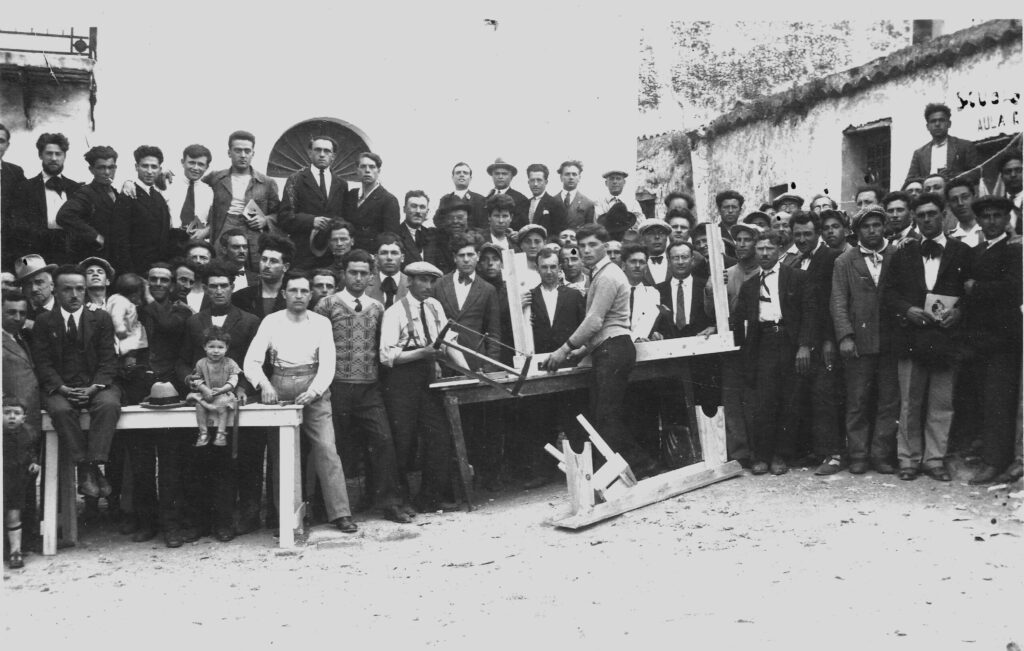The Itinerary of Political Confinement in Ustica: People, Places and Memories
Discover Ustica's history through the "Political Exile Trail": a journey between memory and culture that helps locals rediscover their identity and offers visitors a unique experience among the island's cultural treasures.
Duration
3 hours
Distance
Approximately 3 kilometers
Suitable for
All
Description
The Route unfolds across 20 stages, following the red thread of political confinement on the island over two centuries from 1763 to 1961, during which Ustica was continuously used as a place of exile. The content outlines the regulations, events, and individuals present for political reasons—from the start of Ustica’s colonization under the Bourbons in 1763 to the adoption of the new constitutional law in 1956, which abolished fascist confinement and removed the island from the list of mandatory residence sites. The access points to the route were selected as locations of significant events, residences of the confined, or service structures linked to the colony. Access is granted via QR codes displayed at 17 sites within the town center and 3 outside (Rocca della Falconiera, Arab Cemetery, and Torre Santa Maria). Each access panel includes a historical photo related to the stage’s content, providing visitors with a visual album summarizing the island’s historical events.
Each stage corresponds to a multimedia document dedicated to a specific historical site, complete with texts, images, and links to articles, biographical or descriptive sheets, laws, and videos, allowing visitors to explore specific topics in depth. These details cover not just confinement but also toponymy, archaeology, geology, history, and the island’s natural features. From any stage, users can navigate the entire route, accessing a digital guide usable on-site or remotely via smartphone, tablet, or computer.
The first stage introduces the route’s content, emphasizing how the continuous presence of exiles—variously named (disterrati under the Bourbons, coatti after Italian unification, confinati during fascism, mandatory residents in the republican era)—intertwined with the island’s events and Italy’s broader history.
The second stage covers the early years of colonization and the arrival of the first disterrati sent by the Bourbon government.
The third stage describes the so-called “confinati hotel” and the first collective protests by anti-fascist political prisoners.
The fourth stage highlights the cultural school established by anti-fascist exiles.
The fifth stage, alongside vivid accounts of daily life from letters by Antonio Gramsci, Riccardo Bauer, and Carlo Rosselli, recounts the arrival of the first Libyan deportees in 1911.
The sixth stage, marking Prefect Mori’s visit for the inauguration of the Monument to the Fallen, recalls events tied to the 1906 earthquake and King Vittorio Emanuele III and Queen Elena’s visit to comfort the population.
The seventh stage focuses on Casa Manfrè, where Gramsci, Bordiga, and others lived.
The eighth stage, besides the library founded by anti-fascist exiles, covers emigration and the town square with its Town Hall and Church.
The ninth stage details the defense system against pirates, the “Fosso” prison building, and the archaeological museum.
The tenth stage, dedicated to figures exiled under the Bourbons, outlines the shift in confinement regimes from Bourbons to Savoy, noting the anarchists’ significant presence.
The eleventh stage, featuring socialist cartoonist Giuseppe Scalarini, explains the repurposing of barracks as dormitories for Slavic internees (1942/43) and other anti-fascist women confined in the 1930s.
The twelfth stage describes a site (also used to house Libyan deportees in 1915/16), tracing its uses from Roman times to today, with references to the island’s archaeology and geology.
Stage 13 at the Arab Cemetery memorializes Libyan exiles (1911–1934) and the cemetery’s history.
Stage 14 recounts the 1942/43 Slavic internees, Giuseppe Romita’s contributions to exiles’ social activities, and his ministerial efforts to address the island’s health issues.
Stage 15 marks a signpost limiting exiles’ movement without prior authorization and highlights key figures like Angeloni (sports organizer), Schiavello (socialist canteen manager), and exemplary socialists from Molinella.
Stage 16 covers modern barracks built in 1936 for exiles and internees, plus the local pasta factory exporting to America.
Stage 17 focuses on the colony director’s role and Ustica navigator Vincenzo Di Bartolo.
Stage 18 depicts life in the barracks and the rushed transfer of exiles/interns to mainland camps ahead of the 1943 Allied landing.
Stage 19 discusses anti-fascist figures, Sardinian shepherds, and ‘ndrangheta members recorded in the 1950s.
The route concludes with Stage 20 at Torre Santa Maria, a defense tower later used as a prison and now for cultural activities.
Each stage includes toponymic details tied to the island’s history and brief biographies of all mentioned exiles.
Highlights
The route starts at Largo Padiglione Militare and ends at Torre Santa Maria, with 20 stops marked by numbered panels and QR codes for access. The first stop introduces the route and its content; subsequent stops cover specific themes, drawing inspiration from individual historical sites.
The entire route of approximately 3 km runs mainly within the town center; only three stops are located outside: Rocca della Falconiera, the Arab Cemetery, and Torre Santa Maria, formerly a prison. The entire itinerary can be walked, but the three sites farthest from the town center (about 500 meters) can be reached by car, motorcycle, or bicycle in ten minutes.
Important Notes
The recipients: the island’s inhabitants to promote the recovery of collective memory and their identity as a community, but also its visitors for an experience of the territory extended to its cultural aspects.
Itinerary Data
Recommended Period
year-round
Time: 24 hours out of 24
Want to know more?
Explore the history, locations, and testimonies of Ustica's Political Confinement Trail.
Find out more
